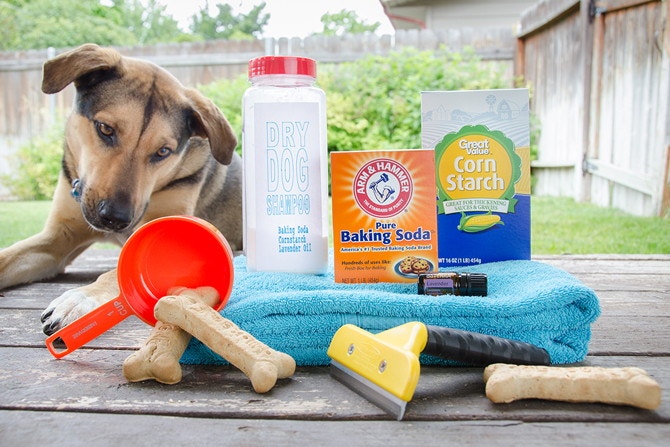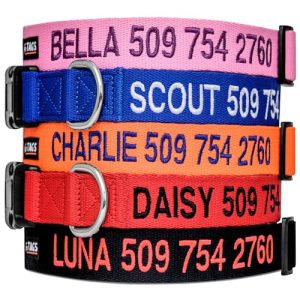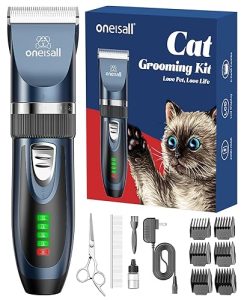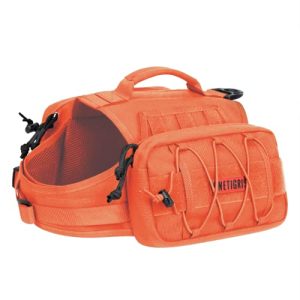If you care about your dog’s health and want to avoid harsh chemicals, making your own dog shampoo at home is a great choice. You might be surprised how simple and affordable it is to create a gentle, effective shampoo using ingredients you probably already have.
Imagine giving your furry friend a bath with a shampoo that’s safe, natural, and tailored just for them. Keep reading, and you’ll discover easy steps to make your own dog shampoo that keeps your pet clean, happy, and healthy.

Credit: thekrazycouponlady.com
Benefits Of Homemade Dog Shampoo
Making dog shampoo at home offers several benefits that go beyond just cleanliness. It gives you control over what touches your pet’s skin, saves money, and ensures your furry friend stays safe from harsh chemicals. Have you ever wondered what’s really in the shampoo you buy? Here’s why homemade shampoo might be a better choice for your dog.
Natural Ingredients
Homemade dog shampoos use simple, natural ingredients like oatmeal, coconut oil, and baking soda. These ingredients soothe your dog’s skin without the risk of irritation from artificial fragrances or chemicals.
Using natural items means you know exactly what your pet is exposed to. This can be especially helpful if your dog has sensitive skin or allergies. Imagine giving your dog a bath with ingredients straight from your kitchen—how much safer would that feel?
Cost-effectiveness
Store-bought dog shampoos can be expensive, especially if you have a large dog or multiple pets. Making shampoo at home cuts down on these costs significantly.
You probably already have many ingredients at home, reducing the need for extra purchases. When you make your own shampoo, you can create larger batches that last longer, saving both time and money.
Safety For Pets
Commercial shampoos often contain chemicals and preservatives that may harm your dog’s skin or cause allergic reactions. Homemade shampoos avoid these risks by using gentle, pet-friendly ingredients.
Have you noticed your dog scratching more after a bath? It could be the shampoo causing discomfort. By making your own, you eliminate unknown irritants and keep your pet comfortable and healthy.

Credit: shop.welovedoodles.com
Essential Ingredients For Dog Shampoo
Making dog shampoo at home is simple and cost-effective. Knowing the essential ingredients helps you create a safe product. The right combination keeps your dog's coat clean and healthy.
Cleansing Agents
Cleansing agents remove dirt and odors from your dog’s fur. Choose mild soaps or castile soap. These are gentle on skin and effective in cleaning. Avoid harsh chemicals that might irritate your dog’s skin.
Moisturizers And Conditioners
Moisturizers keep the coat soft and shiny. Use natural oils like coconut or olive oil. They nourish the skin and prevent dryness. Conditioners help in detangling and add smoothness to the fur. Aloe vera gel is a great natural conditioner. It hydrates and soothes the skin.
Soothing Additives
Soothing additives calm and protect sensitive skin. Oatmeal is a perfect choice for its soothing properties. It reduces itchiness and irritation. Another option is chamomile tea. It provides a calming effect and a pleasant scent.
Step-by-step Recipe For Dog Shampoo
Creating your own dog shampoo at home is simpler than you might think. It lets you control the ingredients, making sure your furry friend gets a gentle, natural clean. Below is a clear, step-by-step recipe to help you make a safe and effective shampoo right in your kitchen.
Gathering Ingredients
Start by collecting all the ingredients to avoid interruptions during the mixing process. You’ll need:
- 1 cup of liquid castile soap (unscented or mild scent)
- 1/2 cup of distilled water
- 1/4 cup of apple cider vinegar (helps with odor and skin balance)
- 1 tablespoon of vegetable glycerin (for moisturizing)
- Optional: a few drops of dog-safe essential oils like lavender or chamomile
Have you checked your pet’s allergies before selecting essential oils? It’s a crucial step to keep your dog safe and comfortable.
Mixing Instructions
Pour the castile soap and distilled water into a clean bowl. Stir gently to mix without creating too many bubbles.
Add the apple cider vinegar and vegetable glycerin. Mix again until everything is combined smoothly.
If you want, add 3 to 5 drops of your chosen essential oil. Be cautious; too much can irritate your dog’s skin.
Remember, gentle mixing ensures the shampoo stays effective and easy to apply.
Storage Tips
Transfer your homemade shampoo into a clean, airtight bottle. Dark-colored bottles work best to protect the ingredients from light.
Keep it in a cool, dry place away from direct sunlight. This helps maintain its freshness for up to a month.
Shake the bottle well before each use because natural ingredients can separate over time.
Tips For Bathing Your Dog
Bathing your dog can be a smooth and even enjoyable experience for both of you if done right. Knowing how to prepare your dog, apply shampoo correctly, and rinse and dry thoroughly makes a big difference. These tips will help you keep your furry friend clean without stress or mess.
Preparing Your Dog
Start by brushing your dog’s coat to remove loose hair and mats. This helps the shampoo reach the skin more effectively. Choose a calm, warm spot for the bath to keep your dog comfortable.
Make sure to have all your supplies ready before you begin. This includes your homemade shampoo, towels, and a cup or sprayer for rinsing. Getting your dog used to the bathing area with gentle praise can ease their nerves.
Applying The Shampoo
Wet your dog’s coat thoroughly with lukewarm water. Avoid getting water in their ears and eyes by tilting the head slightly backward. Pour a small amount of the shampoo into your hands and lather gently, starting from the neck and moving down the body.
Take your time to massage the shampoo into the fur and skin. This not only cleans but also feels good to your dog. Watch your dog’s reaction—if they seem uncomfortable, slow down and reassure them with a calm voice.
Rinsing And Drying
Rinse the shampoo out completely to prevent skin irritation. Use a cup or gentle sprayer to flush the coat with water until it runs clear. Leftover shampoo can cause itching or dryness.
After rinsing, wrap your dog in a towel and pat dry gently. Avoid vigorous rubbing, which can tangle the fur. If your dog tolerates it, use a low-heat hairdryer to speed up drying, but keep it moving to avoid overheating.
Common Mistakes To Avoid
Making dog shampoo at home is rewarding, but it’s easy to slip into habits that do more harm than good. Avoiding common mistakes ensures your DIY shampoo keeps your furry friend safe and happy. Let’s look at some pitfalls you should watch out for.
Using Harmful Ingredients
Not every natural ingredient is safe for dogs. Essential oils like tea tree or peppermint can irritate your pet’s skin or cause allergic reactions.
Even household items like lemon juice or vinegar might seem harmless but can upset your dog’s skin balance if used improperly. Always research each ingredient’s safety for dogs before adding it to your mix.
Ask yourself: Is this ingredient truly dog-friendly, or am I risking a skin reaction to save a few bucks?
Improper Rinsing
Leaving shampoo residue on your dog’s coat is a common mistake that can cause itching and dryness. Take your time rinsing thoroughly until the water runs clear.
Rinsing too quickly might seem like saving time, but it often leaves behind soap that irritates your pet’s skin. Use lukewarm water and gentle massage to remove every trace of shampoo.
Think about how you feel when soap dries on your skin—your dog experiences the same discomfort.
Overbathing
It might seem like frequent baths keep your dog cleaner, but overbathing can strip natural oils from their skin and fur. This leads to dryness and irritation, making your dog uncomfortable.
Most dogs only need a bath every few weeks unless they get particularly dirty. Pay attention to your dog’s coat condition and adjust the frequency accordingly.
Ask yourself: Am I bathing my dog out of necessity or just habit?

Credit: www.gimmesomeoven.com
Customizing Shampoo For Different Coats
Every dog’s coat is unique, and customizing your homemade shampoo can make all the difference in keeping your furry friend happy and healthy. Different coat types need different care, so tweaking your recipe helps target specific issues. Let’s look at how you can adjust your shampoo to suit sensitive skin, oily coats, and dry or flaky skin.
For Sensitive Skin
If your dog’s skin is easily irritated, keep your shampoo gentle and soothing. Use mild ingredients like oatmeal and aloe vera, which calm redness and itching without stripping natural oils.
- Mix ground oatmeal with water to create a soothing base.
- Add a few drops of pure aloe vera gel for extra relief.
- Avoid harsh detergents or strong scents that might cause reactions.
Have you noticed your dog scratching more after a bath? This simple, gentle recipe might be the solution.
For Oily Coats
Oily coats need a shampoo that helps balance excess oil without drying out the skin. Ingredients like lemon juice and apple cider vinegar cut through grease effectively.
- Combine equal parts water and apple cider vinegar as a rinse after shampooing.
- Add fresh lemon juice to the shampoo mix to help reduce oiliness.
- Use a gentle castile soap as the cleaning base to avoid irritation.
Does your dog’s coat look shiny but greasy? Adjusting your shampoo with these ingredients can restore a fresh, clean feel.
For Dry Or Flaky Skin
Dry, flaky skin needs hydration and nourishment. Coconut oil and honey are great natural moisturizers that help soothe dryness.
- Add a tablespoon of coconut oil to your shampoo for deep moisture.
- Mix in a teaspoon of raw honey to help lock in moisture and heal skin.
- Use lukewarm water when bathing to avoid further drying the skin.
Is your dog’s coat dull and flaky? This moisturizing blend might bring back softness and shine.
Frequently Asked Questions
What Ingredients Are Safe For Homemade Dog Shampoo?
Safe ingredients include mild liquid castile soap, coconut oil, and oatmeal. Avoid harsh chemicals and artificial fragrances to protect your dog’s skin. Natural components clean gently without irritation or dryness, making homemade shampoo ideal for sensitive or allergy-prone dogs.
How Do I Make Dog Shampoo With Oatmeal?
Grind plain oatmeal into a fine powder. Mix with warm water and mild castile soap. Oatmeal soothes itchy skin and reduces inflammation. This simple recipe cleans while moisturizing your dog’s coat naturally and safely.
Can Homemade Shampoo Help With Dog Skin Allergies?
Yes, homemade shampoo with oatmeal and aloe vera can soothe allergies. These natural ingredients reduce itching and inflammation. Homemade shampoos avoid harsh chemicals that often worsen allergic reactions, making them gentle alternatives for sensitive dogs.
How Often Should I Bathe My Dog With Homemade Shampoo?
Bath your dog every 4 to 6 weeks using homemade shampoo. Frequent bathing can strip natural oils, causing dryness. Adjust frequency based on your dog’s breed, skin condition, and activity level for optimal coat health.
Conclusion
Making dog shampoo at home is simple and safe. You control what goes into the bottle. Natural ingredients help keep your dog’s skin healthy. No harsh chemicals, just gentle cleaning. This saves money and avoids store-bought additives. Your dog will feel fresh and comfortable.
Try small batches first to find what works best. Homemade shampoo can suit any dog’s needs. Caring for your pet becomes easier and more personal. Give it a try and see the difference yourself.

Emily Barker is the founder of ChillDogLife.com, a space dedicated to helping pup parents discover the best dog products, lifestyle tips, and cozy ideas for happier homes.
A lifelong dog lover, Emily combines her passion for pets with a knack for research to share trusted recommendations on everything from toys and furniture to health and everyday care.
Her goal is simple: to make life easier, stylish, and more joyful for dogs and the people who love them.







